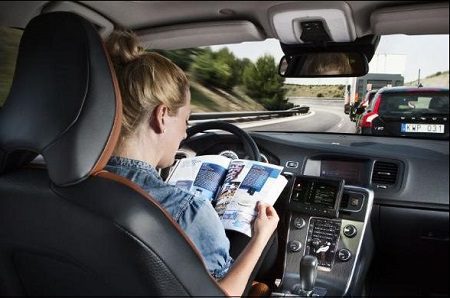The chairman and ranking member of the Senate Commerce, Science and Transportation Committee, plus a member from an automotive-centered state, issued a set of principles they said would guide legislation they plan to write concerning self-driving vehicles.
Chairman John Thune, R-S.D., ranking minority member Bill Nelson, D-Fla., and Gary Peters, D-Mich., jointly released their principles June 13, in advance of a committee hearing the next day on “Paving the Way for Self-Driving Vehicles.”
They also said in a press release that the three will continue working to finalize new legislation, but had set no deadline to introduce a bipartisan bill. They said the legislation “aims to direct strong federal leadership that ensures safe self-driving vehicles on the road and reduces regulatory conflicts to the safe and rapid testing and deployment” of such technology.
“Self-driving vehicle technology will have a transformational impact on highway safety,” said Thune. “Working on a bipartisan basis, we continue to make progress in writing what we expect will become the first-ever changes in federal law helping usher in this new transportation era. These principles underscore our commitment to prioritizing safety, fixing outdated rules and clarifying the role of federal and state governments.”
Their document emphasized that automated vehicles “have the potential to save tens of thousands of lives every year on our nation’s highways, improve mobility and spur enormous economic activity.”
They said the principles new legislation should incorporate will:
-Prioritize safety,
-Promote continued innovation and reduce existing roadblocks,
-Remain tech neutral, to avoid favoring models of some developers others,
-Reinforce separate federal and state roles,
-Strengthen cybersecurity, and
-Educate the public to encourage responsible adoption of self-driving vehicles.
Nelson said the principles are “just a start,” but added that “it’s my hope we’ll find bipartisan consensus on legislation that prioritizes safety and advances the technology.”
Peters, whose state is home to major automakers and is vying with some others to lead automated vehicle research efforts, said that such vehicles “will not only dramatically change how we get from place to place, they have the potential to prevent accidents and save thousands of lives.”
He added: “I’m pleased we have compiled this bipartisan framework, which is an important step toward introducing and enacting meaningful legislation that will help the federal government promote the safe development and adoption of self-driving vehicles and ensure the United States remains the world leader in transportation innovation.”
The hearing included testimony from industry and safety groups.
The Hill newspaper reported that industry officials urged lawmakers to ease current regulations that are intended for traditional cars or trucks, but which limit innovation, testing and deployment of self-driving vehicles. In particular, they targeted rules requiring traditional steering wheels and floor pedals that would not be needed in a fully automated vehicle.
The Hill said Thune responded that “current federal motor vehicle safety standards do not address automated technology, and in some cases, directly conflict with it.” The report said that he added: “We are looking for ways to address these conflicts in outdated rules without weakening the important vehicle safety protections they provide.”

